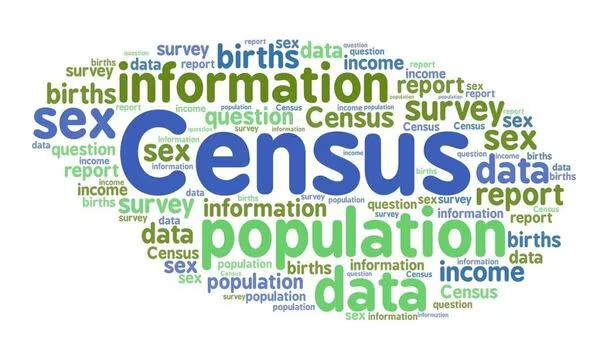Namibia, a vast country with a rich cultural heritage and an array of unique landscapes, is also known for its diligent efforts in demographic data collection. Every ten years, the Namibian government undertakes a massive exercise to track population shifts, understand socio-economic trends, and plan for the future. This process, known as the national census, is a cornerstone of governance and development in the country. The census offers invaluable insights into the nation’s growth, urbanization trends, and population dynamics.
In this article, we delve into how Namibia conducts its decennial census, the challenges faced, and the impact of this exercise on national planning and development.
The History of Censuses in Namibia
Namibia’s history of census-taking dates back to the pre-independence era, though these early efforts were limited in scope and often excluded large sections of the population. After gaining independence in 1990, Namibia conducted its first post-independence census in 1991. This marked a new era of comprehensive data collection aimed at including all citizens, regardless of region or ethnicity.
Subsequent censuses were conducted in 2001, 2011, and 2023. Each iteration saw improvements in methodology, technology, and scope, reflecting Namibia’s commitment to accurate and inclusive demographic data collection.
Why the Census Matters
A national census is more than just a headcount; it is a tool for understanding the socio-economic fabric of the nation. The data collected is used for:
- Resource Allocation: The government relies on census data to distribute resources such as education, healthcare, and infrastructure development equitably across regions.
- Policy Formulation: Accurate demographic data helps in crafting policies that address the needs of specific population groups, such as youth employment initiatives or elder care programs.
- Urban Planning: Understanding urbanization trends helps cities like Windhoek, Walvis Bay, and Rundu plan for housing, transportation, and utilities.
- Electoral Processes: Census data informs the demarcation of electoral constituencies, ensuring fair representation.
- International Reporting: Namibia uses census data to meet international obligations such as reporting on the United Nations’ Sustainable Development Goals (SDGs).
How Namibia Conducts Its Census
Namibia employs a meticulous and inclusive approach to census-taking, ensuring that every individual is counted. Below is a step-by-step overview of the process:
1. Planning and Preparation
The Namibia Statistics Agency (NSA) spearheads the census process. Planning begins years in advance and involves:
- Mapping enumeration areas to ensure comprehensive coverage.
- Training census enumerators to gather accurate data.
- Developing questionnaires tailored to capture a wide range of demographic, social, and economic information.
2. Pilot Surveys
Before the actual census, the NSA conducts pilot surveys in select areas to test the methodology, identify challenges, and refine the process.
3. Public Awareness Campaigns
Public cooperation is vital for the success of the census. The NSA launches awareness campaigns through television, radio, and social media to educate citizens about the importance of participating in the census. These campaigns are conducted in multiple languages to reach diverse communities.
4. Data Collection
Enumerators go door-to-door, conducting interviews and recording data. The census employs the de facto method, meaning individuals are counted based on where they are at the time of the census rather than their usual residence. This method is particularly useful for capturing data on migrant populations and travelers.
5. Technology Integration
In recent years, Namibia has incorporated technology into the census process. Digital tablets are used to collect and upload data in real time, reducing errors and speeding up data processing. Geospatial technology is also employed to map and monitor enumeration areas.
6. Data Analysis and Reporting
Once data collection is complete, statisticians analyze the information to produce detailed reports. These reports are made available to policymakers, researchers, and the public, providing a comprehensive snapshot of Namibia’s demographic landscape.
Challenges in Conducting the Census
Despite its successes, Namibia faces several challenges in conducting the national census:
- Geographical Barriers: Namibia’s vast and sparsely populated landscapes, such as the Namib Desert and the Kunene region, make data collection logistically challenging.
- Cultural Diversity: With over 11 ethnic groups and multiple languages, ensuring accurate communication and understanding can be complex.
- Urbanization: Rapid urban growth and informal settlements pose difficulties in tracking population shifts and ensuring accurate counts.
- Funding and Resources: Conducting a national census is an expensive undertaking, requiring significant financial and human resources.
Key Insights from the 2023 Census
The 2023 census provided a wealth of information about Namibia’s population dynamics. Some of the key findings include:
- Population Growth: Namibia’s population grew at a moderate rate, reflecting trends in declining fertility rates and increased urbanization.
- Urbanization: Over 54% of the population now resides in urban areas, highlighting the need for enhanced urban planning.
- Youthful Population: Namibia remains a young nation, with a significant portion of its population under the age of 25. This demographic presents opportunities and challenges for education, employment, and economic growth.
The Impact of Census Data on Namibia’s Development
The insights gained from the census have far-reaching implications for Namibia’s development. For instance:
- The data on population distribution informs infrastructure projects, such as building schools in high-growth areas.
- Health statistics guide interventions for reducing maternal mortality and combating diseases such as HIV/AIDS.
- Urbanization trends shape housing policies and public transportation systems.
Moreover, census data helps Namibia attract international investment by providing detailed information about market opportunities and labor force characteristics.
A Look Ahead: The Future of Census-Taking in Namibia
As Namibia prepares for its next census in 2033, advancements in technology and data analytics are expected to further enhance the process. Innovations such as artificial intelligence, satellite imagery, and mobile data collection could improve accuracy and efficiency.
Additionally, efforts to address the challenges of inclusivity and representation will be critical in ensuring that every Namibian is counted, regardless of location or socio-economic status.
Namibia’s commitment to conducting a national census every decade is a testament to the country’s dedication to evidence-based governance and development. By tracking population shifts and socio-economic trends, Namibia ensures that its policies and programs are aligned with the needs of its citizens.
As the nation continues to evolve, the census will remain a vital tool for understanding its demographic landscape and planning for a prosperous future. Namibia’s story serves as a model for other nations seeking to harness the power of data for sustainable development.













